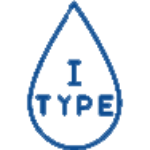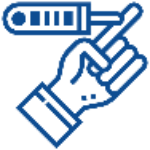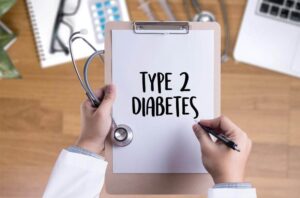Diabetes is a condition where the body has lesser ability to handle increases in blood glucose and because it’s not able to produce adequate amount of insulin the blood glucose levels rise above what is considered normal.




Type2 diabetes represents the most common form of diabetes. In India almost 95% of patients with diabetes are found to have type2 diabetes.
Type2 diabetes is a form of diabetes that occurs due to problems which are present at birth, but these problems manifest later on in life as we grow older. In scientific parlance, we use the term polygenic inheritance for this condition. Some aspects of our lifestyle like a very poor diet and total lack of exercise can worsen diabetes or trigger diabetes at an earlier age than would be expected due to our genetic issues.
How early you get type two diabetes depends on the complement of genes that you inherit .what has been observed is that 90% of the time of onset of diabetes is dependent on family history. If you have a parent who has had diabetes early on in life the chances are very high that you may also get diabetes when you are younger. Diabetes tends to get triggered in the presence of a poor lifestyle on top of unfavourable genes. There is a popular misconception that diabetes results only due to poor lifestyle choices that a person has made and the person himself or herself is responsible for their diabetes. That this cannot be further from the truth. In fact 90% of diabetes that happens happens due to changes in the genes and substantially higher amount of diabetes happens due to epigenetic changes or changes that happened to your genes after your conception that is either in in utero life or later on when you grow older.
In India as a practising Endocrinologist, I see a lot of patients with type two diabetes who are young. Type two diabetes does occur much earlier in the Asian population than the people in the West. This does not mean that type two diabetes is more difficult to manage in the Indian population. What this means is that early recognition and appropriate treatment will make sure that the optimal outcomes or achieve for a patient who has to do with diabetes lifelong.
Firstly it’s important to realise that the terms cure and reversal or slightly different from each other. By Cure we imply that the disease goes away completely never to come back. Imagine if you are 35 years of age and if you been diagnosed with type two diabetes.
If we cure of diabetes you should then not get diabetes till you are 70 to 80 years of age which is which will be your normal lifespan. On the other hand reversal refers to the fact that the progression of diabetes has been stopped so your metabolism, which was abnormal To extent where the blood glucose was high for months- but by changing your lifestyle and with exercise and diet you have somehow arrested the progression of diabetes.
This also means that if you do not continue following the same lifestyle modification the reversal can eventually progress. As doctors and scientists we use a a different term than these two terms which are popularly used. We use the term called remission.
Remission is defined as not having diabetes for six months or more. We should prove that diabetes has not been there by measuring HbA1c which is widely accepted and standardised method of evaluating increases in blood glucose HbA1c of less than six on two occasions six months apart would mean that the diabetes has gone into remission.
Type one diabetes is a form of diabetes where there is total loss of beta cell functions. Beta cells or nothing but cells in our pancreas which produce insulin. In type one diabetes our immune system mistakenly damages the pancreatic beta-cell is in our own body. Scientists call this phenomenon autoimmunity. There are other conditions similar to type one diabetes where other endocrine organs are damage the commonest organ that we know of is the thyroid. Thyroid autoimmunity is extremely common and affects close to 5 to 10% of the population. Type one diabetes is very similar to this disease but it is much less common then hypothyroidism fortunately. Type one diabetes affects of varying proportion of the population depending upon the geographic area. In some countries like Finland the prevalence of type one diabetes is very high. In India the incidence of type one diabetes is less than 4 per one lakh population whereas in countries like Finland this prevalence can be as high as 40 per one lakh population.
 Type one diabetes is a form of diabetes that involves very rapidly and like type two diabetes. A person who is absolutely healthy can develop type one diabetes in a matter of a week to a month. On the other hand in type two diabetes the evolution of diabetes is very slow and you can recognise that people were going to get diabetes in the future by looking at their blood glucose the blood glucose levels go up very slowly year-on-year and only when they breached the value of 126 fasting milligram per decilitre fasting we consider this type two diabetes. in general people with type two diabetes will have a family history since type two diabetes is due to abnormal genes. Onset of diabetes at a younger age see between the ages of 10 and 20 will go strongly in favour of type one diabetes. Type one diabetes patients will often present with very high blood glucose values and will be very symptomatic. They may pass excessive urine feel thirsty often and lose a lot of weight all within a span of a few weeks or a month. Blood glucose values a diagnosis can be very high in type on diabetes. Some patients with type to type one diabetes have a serious condition call Diabetic ketoacidosis at the time of diagnosis.
Type one diabetes is a form of diabetes that involves very rapidly and like type two diabetes. A person who is absolutely healthy can develop type one diabetes in a matter of a week to a month. On the other hand in type two diabetes the evolution of diabetes is very slow and you can recognise that people were going to get diabetes in the future by looking at their blood glucose the blood glucose levels go up very slowly year-on-year and only when they breached the value of 126 fasting milligram per decilitre fasting we consider this type two diabetes. in general people with type two diabetes will have a family history since type two diabetes is due to abnormal genes. Onset of diabetes at a younger age see between the ages of 10 and 20 will go strongly in favour of type one diabetes. Type one diabetes patients will often present with very high blood glucose values and will be very symptomatic. They may pass excessive urine feel thirsty often and lose a lot of weight all within a span of a few weeks or a month. Blood glucose values a diagnosis can be very high in type on diabetes. Some patients with type to type one diabetes have a serious condition call Diabetic ketoacidosis at the time of diagnosis.
Apart from the presence of diabetic ketoacidosis which can be obvious on history a he urine routine examination look for key tones can be an easy method to distinguish between type one diabetes and type two diabetes. The most accurate method to differentiate between type one diabetes and type two diabetes is to evaluate patients.
Diabetic ketoacidosis is a serious condition where an acid called beta hydroxybutyrate or acetoacetate can buildup in the blood of patients with type one diabetes. This condition can be life-threatening and the mortality rate or the number of people with this condition who do not survive post hospitalisation is close to 5% which is a very high number, considering that many people who have this condition or quite young.
Patients with diabetic ketoacidosis will have a combination of symptoms like excessive vomiting abdominal pain fast breathing and after having heard and treated diabetic ketoacidosis for many hours or days they can become unconscious as well.
 Type two diabetes is treated commonly with oral antidiabetic drugs along with intensive lifestyle modification. Some patients with type two diabetes have very high blood glucose values a diagnosis with HbA1c of greater than 10% and random blood glucose values of more than 300 mg/dL. These patients would require insulin therapy for a short duration before oral antidiabetic drugs or initiated.
Type two diabetes is treated commonly with oral antidiabetic drugs along with intensive lifestyle modification. Some patients with type two diabetes have very high blood glucose values a diagnosis with HbA1c of greater than 10% and random blood glucose values of more than 300 mg/dL. These patients would require insulin therapy for a short duration before oral antidiabetic drugs or initiated.
What is intensive lifestyle modification in type two diabetes? Intensive lifestyle modification refers to all measures taken by patients with type two diabetes which can reduce or eliminate the need for concomitant medication.
These modifications can also be used to prevent diabetes and they’re very effective. They’re in fact more effective in the elderly than in younger patients with type two diabetes and everybody who is capable of doing lifestyle modification should pursue them.
Simply put intensive lifestyle modification in type two diabetes has two main components and several minor components.
Diet for type two diabetes is individualised based on the body mass index and excess body fat of the patient. If there is excess body fat or obesity losing weight would definitely improve type two diabetes.
For those who have normal body weight and do not have an Enlarged waist circumference circumference, Weight loss may not be a reasonable goal.
In such patients improving the body composition with improvement of muscle mass will be the goal.
Our dieticians at Magna usually recommend a calorie restriction restricted diet. The goal will be to restrict your daily intake of calories by 500 cal over your usual intake. As a first step or Dietician will assess your daily calorie intake during a follow-up of few days. After that they will modify their initial diet prescription to make sure that you are consuming lesser calories than usual with continuous monitoring of your weight. The calorie composition is also looked at to see that carbohydrate intake as part of total calories does not exceed 50%. You can learn more about our dietary treatments in this link
In order to improve type2 diabetes regular physical activity is required.
Doing physical activity once or twice in a week will not be beneficial whereas doing physical activity at 24 hour intervals that is daily will be of more benefit.
Doing any amount of physical activity will be of benefit in type two diabetes, activity that is more intense will have the optimal benefit.
Typically we recommend that patients who have no symptoms which are suggestive of cardiac disease start on an intensive exercise program
Guidelines recommend 150 minutes per week of moderate to high intensity physical activity. Moderate intensity physical activity usually will increase your heart rate to between 50 and 75% of your target heart rate. Your target heart rate is usually calculated as 220 minus your age. For example a 40-year-old person will have a maximum target heart rate of 180 per minute so physical activity in his case will be moderate if the target heart rate attend is between 90 and 135 bpm. This is achieved by brisk walking rather than strolling. Many people who do not have adequate physical fitness and are totally sedentary may have higher hot rates with lower intensity of activity they should concurrently do weight loss through diet and slowly increase the intensity of physical activity. We can also define physical activity in terms of the speed with which walking or running is done walking at 5 to 6 km/h is considered moderate intensity intensive activity for someone with average physical fitness jogging or running at more than 7 km/h is considered high intensity physical activity.
Strength training
For those patients with type two diabetes who have Sarco pink obesity that is a lower muscle mass with excess body fat strength training becomes very imperative. Strength training refers to exercising muscles against a fixed resistance in order to improve the muscle tone and strength.
Usually 30 minutes of string training activity is recommended on at least three days a week under the guidance of a good physical trainer. In all our centres we will recommend strength training as part of our diabetes management for individuals who require the same.
Many people consider taking medication for type 2 diabetes as a form of dependency on medication and also a failure of their own lifestyle modification efforts. This this is in fact not accurate. Studies have shown that despite optimal lifestyle modification, say diet to the prescribed extent and physical activity with achieved goal of weight loss diabetes does tend to progress in individuals over a 5 to 10 year period. This is because type two diabetes is a poly genetic disease and the gene dysfunction leads to progressive loss of beta cell function. Since lifestyle intervention is not uniformly successful in individuals with type two diabetes. we are my magna always recommend medical medication along with lifestyle modification. Another reason for starting medication early in the course of type two diabetes is that many long-term studies have shown that those individuals who control their blood glucose very well from the day of diagnosis tend to do better than those individuals who have higher HbA1c values over time. In fact when patients ask us what can be the long-term side-effect of medication we say that one of the important side-effects is actually old age. Therefore if you have type two diabetes you must view oral medication as used to treat type two diabetes as an ally and seek rational use of them in order to maintain your even sees at the lowest possible level without any Over effects.
If you have type two diabetes and have had a heart attack or stroke. If you been admitted with heart failure to hospital then SGLT2 innovators have to be used in your treatment without without other medication-this is because recent research has shown that using these medication will increase longevity in patients who have such conditions.
Apart from this there are there is several new research which is shown that using a combination of medication at the onset of diabetes treatment gives long-term success in terms of both control and avoiding complications.
After taking into account the severity of your diabetes and your comorbidities is certified Endocrinologist will decide on your medical therapy. At the time of initiation usually the probable side-effects of medication is also discussed. Fortunately most of the medication that are used to treat type two diabetes have few or no side-effects. There is also a diabetes educator or a nurse who is a part of all our care teams and all our patients have the phone number of these educators. In case of any symptoms that may emerge after initiation of oral antidiabetic drugs this is addressed easily over the phone or via online chats. Our experience over the years has been that patients have been able to understand her medication better and follow the medication as per recommendations if they have access to our diabetes educators.
Patients who are on oral medication and where the doctor is confident that the HbA1c control will be optimal over a three-month period usually need not self monitor their blood glucose. Self monitoring of blood glucose is recommended more for patients who require insulin and for patients with pregnancy. However we strongly recommend that all patients with type two diabetes monitor their HbA1c by a good quality AC every three months ones and usually along with HbA1c the random blood glucose is also measured. In all our centres we have a point of care HbA1c which can provide results within a few minutes. Typically patients who visit our centres get their HbA1c done along with their usual vitals examination. This improves care because the planning and execution required for care reduces for the patient. We set a goal of HbA1c based on the age of the patient the number of comorbidities that they have and their cardiovascular risk as well.
Contrary to popular belief our Endocrinologist focus on several other parameters of a patients with type two diabetes and his or her health. These namely are BP, LDL or lipid levels, need for antiplatelet therapy, renal function, Retina Pati, urine albumin excretion rate, cardiac condition.
This is also the reason why we recommend an annual physical examination for diabetes related complications. Read more about our annual diabetes health checks here.
We are a healthcare group founded by endocrinologists. Our vision is to provide personalized and evidence based health care for patients with Endocrine Disorders?.
Common disorders include Diabetes, Obesity, Thyroid dysfunction and PCOS. All these disorders require repeated examination by the doctor, quality laboratory evidence based prescribing, nurse /dietitian educators, podiatrist, preventive cardiologist, urologist and many more professionals. We endeavor to bring this integrated healthcare team under one roof at an affordable cost to our patients with endocrine problems.
All the information of the website is published in good faith and for general information purpose only. Any action you take upon the information you find on the website is strictly at your own risk. We will not be liable for any losses/ or damages in connection with the use of our website. By using our website, you hereby consent to our disclaimer and agree to its terms.
